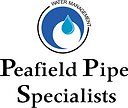Pipelines form the lifeblood of modern infrastructure, transporting everything from water and natural gas to crude oil and chemicals. Ensuring the safety and integrity of these pipelines is paramount, and one crucial aspect of this maintenance is hydrostatic pressure testing. This procedure allows engineers and technicians to evaluate a pipeline’s strength and reliability under real-world conditions. In this article, we will delve into the hydrostatic pressure testing procedure for pipelines, shedding light on its significance and the steps involved.
Understanding Hydrostatic Pressure Testing
Hydrostatic pressure testing, often referred to simply as hydrotesting, is a non-destructive method used to verify the structural integrity of pipelines. It involves subjecting a pipeline to elevated pressure levels with a liquid (usually water) to simulate the stresses it would experience during normal operation. The primary objectives of this testing are to identify and rectify potential leaks, weak spots, or material defects that could compromise the pipeline’s safety.
Why is Hydrostatic Pressure Testing Essential?
Safety Assurance: Ensuring the integrity of pipelines is vital for public safety. Any failure in a pipeline can lead to catastrophic consequences, including environmental damage, loss of life, and significant economic losses.
Compliance with Regulations: Regulatory authorities require periodic hydrotesting to validate pipeline safety. Failing to comply with these requirements can result in hefty fines and penalties.
Preventing Catastrophic Failures: Hydrotesting helps identify weaknesses and flaws in pipelines before they become major problems, preventing costly and dangerous failures.
The Hydrostatic Pressure Testing Procedure
Hydrotesting is a meticulous process that follows a specific set of steps to ensure accurate results. Let’s break down the procedure into its essential components:
1. Test Preparation
Before the actual testing can begin, a series of preparatory steps are undertaken:
Site Inspection: Engineers examine the pipeline and its surroundings, checking for any visible defects or potential hazards.
Isolation: The pipeline section to be tested is isolated from the rest of the system to ensure controlled testing conditions.
Water Filling: The pipeline is filled with the test medium, typically water. This process eliminates any air pockets that could affect the results.
2. Pressure Increase
Once the pipeline is filled with water, pressure is gradually increased to the desired level. The rate of pressure increase is carefully controlled to prevent sudden stress on the pipeline, which could lead to damage.
3. Pressure Maintenance
After reaching the test pressure, the pipeline is held at that pressure for a specified duration, typically between 4 to 8 hours. This duration allows engineers to observe the pipeline’s behavior under sustained pressure.
4. Inspection and Monitoring
During the pressure maintenance phase, a variety of tests and inspections are conducted:
Visual Inspection: Technicians visually inspect the pipeline for any signs of leakage, distortion, or abnormal behavior.
Instrumentation: Pressure gauges, temperature sensors, and strain gauges are used to monitor the pipeline’s response to the applied pressure.
Leak Detection: Sophisticated leak detection systems, including acoustic sensors and hydrophones, are employed to identify even the smallest leaks.
5. Pressure Reduction and Post-Test Inspection
After the specified duration, the pressure is slowly reduced to ambient levels. This reduction is carefully controlled to prevent sudden decompression, which could be hazardous. Once the pressure has returned to normal, technicians conduct a final inspection to verify the pipeline’s integrity.
6. Evaluation and Reporting
The data collected during the hydrostatic pressure testing procedure is analyzed to assess the pipeline’s performance. A detailed report is generated, documenting the test results, any anomalies observed, and recommendations for repairs or further inspections.
Conclusion
Hydrostatic pressure testing is an indispensable tool in ensuring the safety and reliability of pipelines. By subjecting pipelines to controlled pressure levels, this procedure helps identify potential weaknesses and defects before they can lead to catastrophic failures. Compliance with regulatory requirements and thorough testing protocols are essential in maintaining the integrity of our pipeline infrastructure. As technology continues to advance, we can expect even more sophisticated testing methods to emerge, further enhancing our ability to protect these critical lifelines. In an era where environmental concerns and safety are paramount, hydrotesting remains a fundamental practice in the pipeline industry, ensuring that our communities and the environment remain safe and secure.
